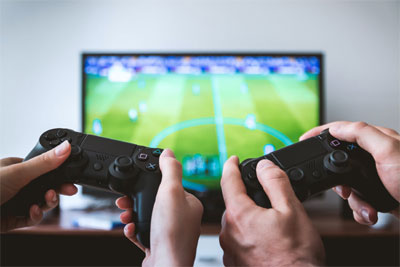Continuous Watts Used for a Tcl 32 in
Off-the-Grid: How Many Watts and Amps Does a TV Use - TV Wattage
TVs are not used any more for just 'watching a TV' - they are used for 'watching TV', but also for media streaming, for gaming, as communication devices, part of security systems, etc. - it is vital to know how many watts and energy in general they require.
Regardless if You are worried about your electric bill or you want to watch TV during power outages, we bring You the TV wattage comparison chart taking into account TV sizes and technologies.
Updated: August 4, 2020.


TV Types, Technologies, and Power Consumption
The most popular modern TVs are LED, LCD, and OLED (QLED) flat-screen TVs - they are featuring rather low power consumption, great contrast, broad color range, etc.
The following comparison chart lists some of the most popular TV sizes and TV technologies (even ancient ones):
| Screen Size (Inches) | LED | OLED | LCD | CRT | Plasma |
| 15 | 15 | - | 18 | 65 | - |
| 17 | 18 | - | 20 | 75 | - |
| 19 | 20 | - | 22 | 80 | - |
| 20 | 24 | - | 26 | 90 | - |
| 21 | 26 | - | 30 | 100 | - |
| 22 | 30 | - | 40 | 110 | - |
| 24 | 35 | - | 50 | 120 | - |
| 30 | 38 | - | 60 | - | 150 |
| 32 | 41 | 57 | 70 | - | 160 |
| 37 | 44 | 66 | 80 | - | 180 |
| 40 | 50 | 72 | 100 | - | 200 |
| 42 | 57 | 75 | 120 | - | 220 |
| 50 | 72 | 89 | 150 | - | 300 |
| 55 | 80 | 98 | 180 | - | 370 |
| 60 | 88 | 107 | 200 | - | 500 |
Few Notes:
- these values are just general guidelines. In order to know the actual power consumption of your TV, check the label at the back of the TV that you have - that is the best and most accurate way of finding out how many watts does your TV use.
- old technologies like CRT (Cathode Ray Tube), Plasma and similar consume much more power than LED, LCD and OLED TVs and if you have any of these, replace them with newer, energy more efficient models. And recycle them properly.

- actual power consumption can be significantly increased with various add-ons, like external hard drive (use SSD instead of 'classic' SATA hard drive), USB memory stick, enabled Bluetooth or Wi-Fi, networking over UTP connection, external speakers, etc. Even different TV models of the same technology and the same size, from the same brand, can differ in energy requirements significantly - technology advances rather quickly and TVs from 5 years ago required more power just for 'working', but they also had less add-ons.
- the standby power of modern TVs is in the range of 0.5 to 2 watts, practically negligible if the TV is used on a daily basis. If the TV is not going to be used for a longer period of time, unplug it from the power outlet, just in case.
- the number of TVs also plays important role in determining the final energy bill and maximum power consumption, although if you have only LCD/OLED TVs, you should be more worried about your AC unit and not your TVs.
How Many Watts Does a 32-inch LED TV Use?
32-inch LED TVs are very popular, especially for children, guests, and dorm rooms. They are fairly cheap, lightweight, relatively compact, and easy to carry even when going camping or fishing.
Their consumption may vary significantly even among the TVs of the same technology and brand:
- 32" LED: 30 – 55 watts, but generally around 40 watts,
- 32" OLED: around 55 - 60 watts,
- 32" LCD: 50 – 85 watts, but on average around 65-70 watts.
For example, old 32" CRT TVs required up to 150-200 watts (even more if the screen brightness is increased) with an average consumption of around 120 watts. Also, our Boat, Camping, RV and Household Appliances Wattage Charts article, 27" Television is rated at 500 watts - that is the so-called 'Worst Case Scenario' for safety reasons.
How Many Watts Does a 55-inch LED TV Use?
55-inch LED TVs are very popular models as main TVs in many homes with 60-inch and even larger models becoming more and more popular as well.
Again, their consumption may vary, but generally:
- 55" LED: 60 - 90 watts, on average 80 watts,
- 55" OLED: 90 - 120 watts, on average 105-110 watts.
For short, in order to find out the maximum power consumption of your TV, check its label on the back of the TV.
How to Power TV in Emergency?
In the case of emergency, LED, LCD and OLED TVs may be powered using power generators, power stations, and using inverter/deep cycle battery combinations.
 Power generators burn chemical fuel (gas, diesel, propane gas, natural gas, etc.) and generate electric power. 1000-2000 watts power generators are compact, lightweight, and portable units that MUST operate outside since they emit fumes contains dangerous CO2 and poisonous CO.
Power generators burn chemical fuel (gas, diesel, propane gas, natural gas, etc.) and generate electric power. 1000-2000 watts power generators are compact, lightweight, and portable units that MUST operate outside since they emit fumes contains dangerous CO2 and poisonous CO.
However, most 2000W power generators may power 100W TV sets for 10+ hours easily, with powering few more devices alongside.
For more about this topic, feel free to check our What Can You Run on a 2000 Watt Generator? article.
Power stations feature built-in lithium-ion batteries and may be used indoors safely.
Also, they are practically maintenance-free units, requiring the users just to charge them regularly. On the other hand, energy stored in the onboard batteries is rather limited when compared with the chemical energy of fuels like gas, diesel, propane, and similar.
For example, one of the most popular portable power stations is Jackery Portable Power Station Explorer 500, which is able to store 518 Wh of energy and with the efficiency of 85%, it is able to provide 100W for 4h and 20 minutes.
And it can be easily recharged using Jackery SolarSaga 100W Portable Solar Panels.
For more on this topic, feel free to check our Best Solar Panel Kits - 100 Watts, 200 Watts, 400 Watts Kits article.
Power inverters connected to deep-cycle batteries may provide energy for TV sets (and other devices) for longer periods of time and may operate indoors.
If deep-cycle batteries are not available, one may use car batteries instead, but be very careful not to discharge it below, for example, 50% - deep discharge applications may shorten the operating life of starting/cranking batteries significantly, and may prevent the battery to crank the engine when semi-discharged.
With efficiencies around 85-90%, cheap 300-500W inverters may power 100W TV sets easily.
If you have, for example, 100 Ah 12V deep cycle battery (battery group 31 or perhaps battery group 27), such battery may provide power for such a TV set for at least 10 hours.
Note: when calculating how much a deep cycle battery may power a power inverter, always check the battery's constant power discharge chart. For example, a very popular deep-cycle WindyNation BAT-NSAP12-100 battery may provide 118.8 watts of power for 10h at 77°F (25°C) down to 10.8 volts.
Long Story Short: If You wonder how many watts does a flat-screen TV uses, just check the label at the back of your TV for the exact value, or use our chart for general value.
Regardless if you are worried about your electric energy bill or you want/need to power TV during a power outage, having a newer TV may help significantly - if you still have plasma or even CRT TV, recycle it and get a new, much more energy-efficient LED flat-screen TV.
Source: https://www.batteryequivalents.com/off-the-grid-how-many-watts-does-a-tv-use.html#:~:text=%2D%2032%E2%80%9D%20LCD%3A%2050%20%E2%80%93,average%20around%2065%2D70%20watts.
0 Response to "Continuous Watts Used for a Tcl 32 in"
Post a Comment